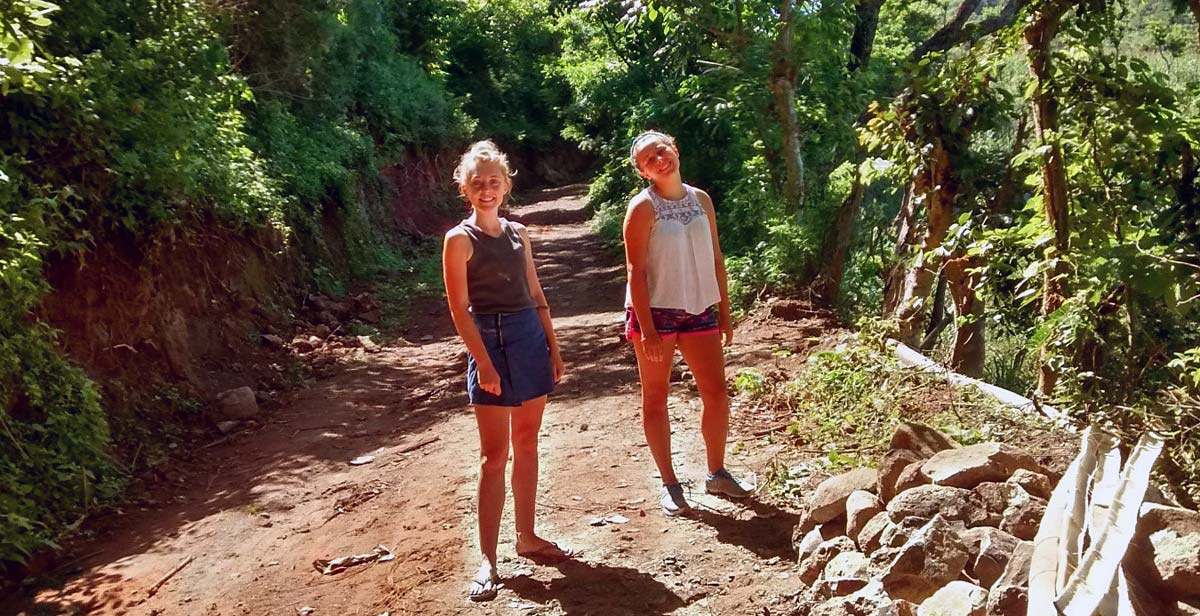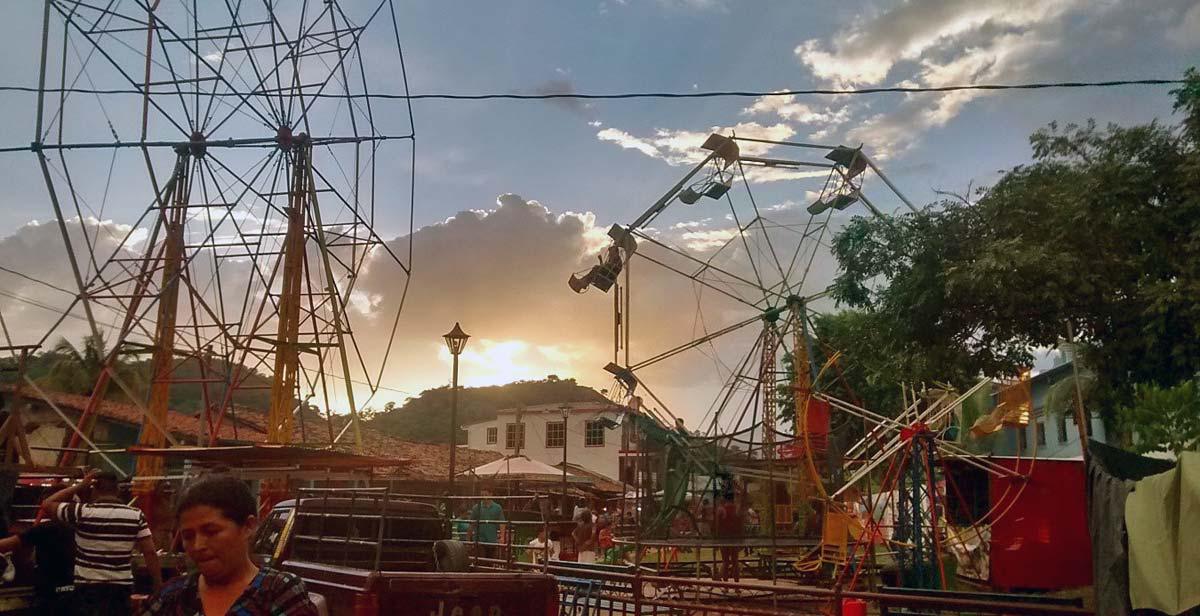This week is the local festival of Arcatao, celebrating their patron’s day, Saint Bartholomew Apostle - Fiestas Patronales del Municipio de Arcatao. This has been going on since last week and the town has really come alive during the activities. These have ranged from an event focusing on the elderly people of Arcatao, a live show of traditional El Salvadorian music, a community dance and a firework display. Throughout it all we have been flitting in and out, visiting the travelling stalls that sell anything from coconut sweet treats to getting your hair done in dreadlocks for USD$5.
The thing that has certainly struck me is the liveliness of the town during the festivities. Usually Arcatao is a reasonably quiet place. In the day children are at school, farmers are working in the fields and everyone else seems to be employed in the shops or the never-ending task of sweeping the dust that gets everywhere here. This week however, as soon as night falls, the central square is thronging with people of all ages; from those newly born and clinging onto their mothers’ t-shirts to white-haired women clapping along to the live music. Everyone is wearing smiles and sugar as the sweets get passed from sticky fingers to sticky faces and the noise grows gradually throughout the night.
Everyone knows everybody else in a town like this, and children are free to scurry between every pair of legs looking for the best spot to watch before racing away again, safe in the community spirit that touches everything. Pizzas bubble with melted cheese and chips fry in massive vats of oil as we walk around, taking in all the sights and smells. Many vendors have travelled here from different areas and a jigsaw of tarpaulin and car boots makes up the shopping strip of the occasion; there are clothes and crocs, temporary tattoos and hand-made jewellery. In the spirit of throwing ourselves into everything we have embarrassed ourselves with traditional dancing, gotten a customary dreadlock, and attended the baile (dance) where we sung our hearts out to the few El Salvadorian chart songs that we knew.
In the corners of the fun, there always stands a soldier, complete with an assault rifle. It is hard to imagine a town such as Arcatao, now filled with stalls that glow at night time, being torn apart by civil war not a quarter of a century ago, plastered by bombs rather than wowed by fireworks. The display, loud and bright, was a testament to how far the town has come since the war, returning to their traditional festivals with an enthusiasm that captivates all ages.
As the display thundered in the sky, and all the volunteers sat on the steps of our local partner organisation Centro Bartolomé de las Casas’ (CBC) house looking upwards, there was a power outage. Without artificial lights, the only things to see were the explosions of bright green sparks and stars. It was one of the most beautiful moments of my time here, of which there have been many. The group of young people around me had all travelled thousands of miles to volunteer in a community they had never visited, and the community had in turn welcomed us with open arms and hearts. The workshops we have done, making recycled decorations and producing a photo exhibition on climate change, as well as touring the community of Santa Caterina Masahuat on their Action Day, have displayed the true extent of youth participation in the area and how keen they are to be involved with the development of their world.

The youth are the generation that will be most affected by climate change, which is one of the main focuses of our placement here. Being a largely agricultural economy, El Salvador contributes very little to climate change. However, with their dependency on the rainy season to grow crops and the increasingly changing weather patterns due to climate change, they are being disproportionately affected. The future for the youth of this country is desperately unsure, because of the continued rebuilding after the civil war and the climate, which is changing faster than the agriculture sector can adapt.
The traditional festival is a beautiful display of the community spirit that resides here, but I cannot help but wonder whether these generous people will be able to withstand the challenges that face them in the 21th century as soundly as they did those in the past.
Written by ICS volunteers Katherine Maloney, Katherine Maynard and Benjamin White



